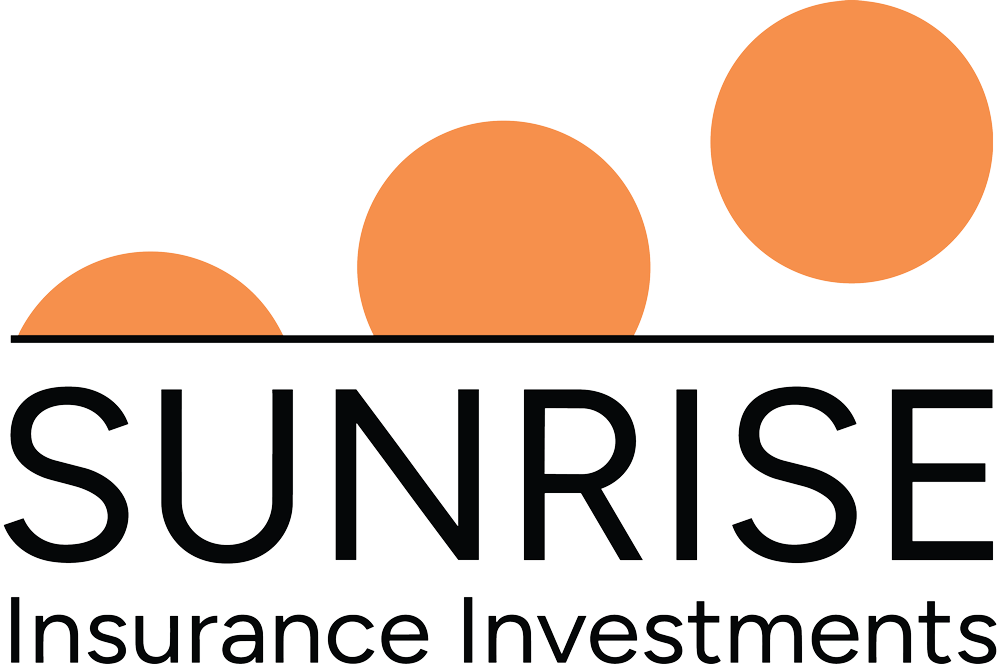As the Federal Funds rate is expected to rise to at least 2.62% by the end of the year, a question arises: what impact will this have on IUL caps? The answer to this question is crucial for policyholders to maximize their returns. With federal interest rates influencing IUL performance, it is essential to understand the impact of federal interest rates on IUL caps.
Key Takeaways
- Federal interest rates can significantly impact IUL caps, making it crucial for policyholders to stay informed.
- IUL policies offer a guaranteed minimum crediting rate to protect against negative returns from selected indices.
- Rising interest rates can enhance IUL policies by allowing quicker increases in minimum crediting rates and raising caps and participation rates on existing policies.
- The average ongoing fees and costs of insurance for Indexed Universal Life (IUL) policies range between 0.50% to 1.5% when optimally designed.
- IUL policies require diligent management, particularly regarding the rising cost of insurance, which increases annually per $1,000 of death benefit.
- Tax treatment of IUL allows for tax-deferred growth and tax-free withdrawals of principal, similar to Roth IRAs, but without age restrictions for withdrawals.
- Understanding the impact of federal interest rates on IUL caps is vital for policyholders to make informed decisions and maximize their returns.
Understanding the Basics of Federal Interest Rates
The federal interest rates, set by the Federal Reserve, are key to the economy and financial markets. The Federal Reserve, or “Fed,” aims for maximum employment, stable prices, and moderate long-term interest rates. These rates greatly affect the growth of cash value in indexed universal life (IUL) policies.
The Federal Reserve’s rate decisions are influenced by inflation, employment, and economic growth. The Fed’s moves can impact everything from mortgage rates to stock market performance. It is essential to understand the basics of federal interest rates to make smart investment choices, including IUL policies.
These factors guide the Federal Reserve in setting the right federal reserve rates. They aim to achieve maximum employment and price stability.
Looking at historical interest rate trends, we see rates have changed over time. This affects the economy and financial markets. Knowing these trends helps investors make better choices for their IUL policies and understand the impact of federal interest rates on insurance.
Indexed Universal Life Insurance: A Comprehensive Overview
Indexed Universal Life (IUL) insurance is a permanent life insurance type. It offers tax-deferred growth and income potential. The iul performance is linked to a stock index, like the S&P 500. The cash value grows with the index’s performance.
IUL policies have indexed universal life caps on gains, from 8% to 12%. The participation rate varies, from 25% to over 100%. This means the growth can be quite significant.
The iul investment strategy involves putting cash value into a fixed-rate account or an indexed account. Growth may slow if the index drops, fees rise, or if cash is used for premiums. Yet, the cash value is safe from market losses. It’s only affected by policy charges, loans, withdrawals, and distributions.
IUL policies have several key features:
* Tax-free death benefit for beneficiaries
* Potential for tax-deferred growth and income
* Flexibility in premium payments and death benefit amounts
* Ability to access cash value at any time without penalty
IUL insurance is a valuable part of a financial plan. It combines life insurance protection with tax-deferred growth and income. By understanding IUL policies, individuals can make smart choices. They can work towards their long-term financial goals.
The Mechanics of IUL Caps and Crediting Methods
Knowing how iul caps work is key to getting the most out of iul performance. The interest rate plays a big role in how well an IUL policy does. IULs use different methods to earn interest, like fixed and indexed accounts, which can grow based on the stock and bond market.
The interest rate impact on insurance is very important. IULs promise a minimum interest rate, so your money won’t lose value. For example, the Fixed Account guarantees a rate of at least 1.5%. Some policies also offer extra interest in later years.
IULs use different ways to credit interest, like Daily Average or Monthly Point-to-Point. Each method has rules and limits, like iul caps and participation rates. For example, a Monthly Point-to-Point strategy might have a cap rate of 4.00% and a 100% participation rate. This could mean an Interest Crediting Rate of 10.00%.
It’s important to grasp the basics of iul caps and crediting methods. By understanding the interest rate impact on insurance and the different strategies, you can make the most of your iul performance. This helps you reach your financial goals.
Direct Impact of Federal Interest Rates on IUL Caps
Federal interest rates have a big impact on Indexed Universal Life (IUL) policies. These rates can change the crediting rates and caps of IUL policies. It’s important for policyholders to keep up with rate changes.
When federal interest rates change, it directly affects IUL caps. For example, the 2020 Federal Reserve rate cuts impacted insurance company yields. This, in turn, affected IUL policy performance.
Understanding how federal interest rates affect IUL caps and crediting rates is key. Lower interest rates mean lower caps and crediting rates. Higher interest rates mean the opposite. Policyholders need to know these changes to make smart choices about their IUL policies.

To deal with the impact of federal interest rates on IUL caps, policyholders can take a few steps. They should:
* Keep up with federal interest rate changes
* Check their IUL policy’s crediting rates and caps
* Adjust their premium payments or policy terms if needed
By doing these things, policyholders can manage the impact of interest rates on their IUL policies. This helps them get the most from their investment.
Market Dynamics and Insurance Carrier Responses
Insurance companies keep a close eye on federal reserve rates. These rates affect indexed universal life caps and the overall interest rate impact on insurance. The market is always shifting, and insurance companies must stay ahead to compete.
When federal reserve rates change, insurance companies tweak their investment plans. They aim to lessen the interest rate impact on insurance. This means spreading out their investments and using strategies to safeguard their money.
Insurance companies employ several tactics, such as:
* Spreading out their investments to lower risk
* Using indexed universal life caps to cap potential losses
* Applying risk reduction methods to shield against market drops
* Keeping an eye on federal reserve rates and adjusting plans as needed
Understanding how insurance companies react to market changes helps policyholders. It lets them make smart choices about their indexed universal life policies. This way, they can confidently navigate the complex world of insurance.
Optimizing IUL Performance in Different Rate Environments
To get the most out of iul performance, it’s key to know how to adjust your iul investment strategy for different interest rates. The impact of federal interest rates on iul caps greatly affects the returns of an Indexed Universal Life (IUL) policy.
For example, when interest rates are high, IUL policies can give you better returns. But when rates are low, returns might be limited. It’s important to think about the impact of federal interest rates on iul caps when planning your iul investment strategy. Look at participation rates, maximum return caps, and policy fees.
Here are some ways to improve iul performance:
- Choose an IUL policy with a high participation rate to maximize returns
- Consider an uncapped IUL crediting strategy for potentially higher returns
- Monitor and adjust the policy’s investment strategy as interest rates change

By knowing how to optimize iul performance in various rate settings, you can make smart choices for your iul investment strategy. This helps you get the most out of your IUL policy. Keeping up with interest rate changes and their impact of federal interest rates on iul caps is crucial for the best results.
Strategic Considerations for IUL Policyholders
If you have an IUL policy, it’s key to find ways to boost your returns. This is especially true with the current federal interest rates and how they affect iul caps. The success of your IUL policy depends on several things, like the crediting methods and floor protection features. It’s important to check your policy often and adjust your plans as needed.
The federal interest rates are crucial in setting the iul caps. This can change how much your policy can grow. Knowing how these rates impact your policy helps you make better choices. For example, you might change your investments or how much you pay in premiums to keep up with rate changes.
Short-term Adjustment Strategies
Here are some quick ways IUL policyholders can adjust:
- Move investments to higher interest rates
- Change premium payments to grow cash value faster
- Use tax-free loans or withdrawals for cash
Long-term Planning Approaches
For long-term goals, IUL policyholders should aim for growth and safety. This might mean:
- Spreading investments across different types
- Keeping an eye on and tweaking policy settings
- Adding riders or extras to boost benefits
By using smart strategies for your IUL policy, you can improve its performance. This way, you can reach your financial goals, even with changes in federal interest rates and their effect on iul caps.
Future Trends and Projections
Federal interest rates have a big impact on iul caps. It’s important to know how these changes affect iul caps and your financial stability. With over 25% of life insurance bought in 2023 being IUL, it’s clear IUL is getting more popular.
Federal interest rates are key to iul caps. Knowing this relationship helps you make smart choices. IUL policies can earn interest from 9% to 10%. But, the worst-case scenario is a 0% return if the index is negative.
Looking to the future, the stock market’s average return is about 8%. Individual investors usually get around 4% of that. IUL policies offer a growth floor of 0% to 2%, protecting against market drops. Here’s a table showing the benefits of IUL policies:
| Company | Projected Tax-Free Income at Age 65 | Internal Rate of Return (IRR) at Age 65 |
|---|---|---|
| North American | $259,000 | 8.25% |
| Allianz | $166,860 | 8.14% |
| National Life | $158,000 | 7.31% |
In conclusion, understanding how federal interest rates affect iul caps is key. By knowing the benefits and risks, you can make smart choices. This helps you secure your financial future and reach your long-term goals.
Navigating IUL Investment Decisions in Today’s Market
Understanding the impact of federal interest rates on IUL caps is key for smart investment choices. IUL insurance offers tax-deferred growth and lifelong coverage. But, it’s important to think about how federal interest rates affect IUL caps and your investment strategy.
Consider the participation rate, which shows how much of the index’s growth you get. Most IUL policies have a 100% participation rate. This means you get all gains up to the cap. Plus, IUL policies often have an interest rate guarantee to protect against losses.
To make good IUL investment choices, keep up with federal interest rate changes and their effect on IUL caps. Use a framework that includes market analysis, risk tools, and your investment strategy. This way, you can make informed decisions and reach your financial goals.
Some important stats to keep in mind include:
- Whole life insurance usually grows cash value at a guaranteed rate, with a minimum of 2% in standard policies.
- IUL policies have caps on gains from 8% to 12%.
- The S&P 500 index fell by 18.1% in 2022 but rose by 24.2% in 2023.
Conclusion: Maximizing Your IUL Strategy in Any Rate Environment
The impact of federal interest rates on IUL caps is key for those looking to boost their returns. By grasping these dynamics, you can fine-tune your IUL strategy. This way, you can confidently move through the changing market.
Interest rates may go up, down, or stay the same. Yet, there are strategies to improve your IUL’s performance. Keeping up with trends and adjusting your plan can make sure it keeps growing and offering tax benefits.
Make the most of your IUL plan’s flexibility. Work with your financial advisor to update your strategy when needed. With the right attitude and a proactive plan, you can handle rate changes and reach your financial goals.



